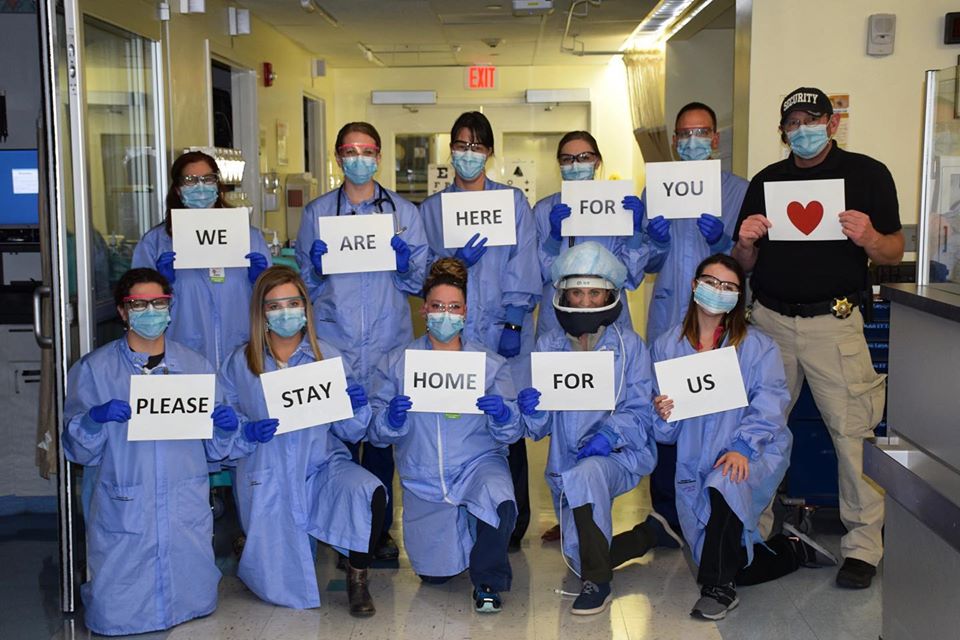Each of these seven prerequisites must be met before a county or region can enter Phase 1 of Reopening Oregon. While many of these prerequisites are set at the county level, some are set at the Health Region or Statewide level.
- Declining prevalence of COVID-19 (OHA detailed reference document: “The Three Health
Signs We Must See to Re-open Oregon”)
a. The percentage of emergency department visits for COVID-19-like illnesses
(CLI) are less than the historic average for flu at the same time of year.
b. A 14-day decline in COVID-19 hospital admissions.
i. This metric only applies to counties with more than 5 hospitalized cases in the last 28 days. - Minimum Testing Regimen (OHA detailed reference document: “COVID-19 Strategic Testing Plan for Oregon” and “Oregon COVID-19 Testing and Contact Tracing Strategy”)
a. Regions must be able to administer COVID-19 testing at a rate of 30 per 10,000 people per week. Regions must implement a testing regimen that prioritizes symptomatic persons and individuals who came into contact with a known COVID-positive person and includes testing of all people in congregate settings when there is a positive test. This includes long-term care facilities and county jails among others. The plan must include frequent tests of frontline and essential workers and industries where workers may not be able to practice optimal physical distancing (e.g., agricultural processing, meat packing).
b. Regions must maintain an appropriate number of testing sites to
accommodate its population and must fully advertise where and how people can get tested. The region must work with local public health and OHA to use the collected data to track and trace the spread of the virus. Testing must be accessible to low-income and underserved communities.
c. This metric is measured at the Health Region level, not at the county level. An individual county cannot move into phase one if regional testing capacity is beneath that level. - Contact Tracing System (OHA detailed reference document :”Oregon’s Plan to Stop the Spread of COVID-19”, “Oregon COVID-19 Testing and Contact Tracing Strategy” and “Interim Investigative Guidelines”)
a. Counties must have a minimum of 15 contact tracers for every 100,000 people. Every county must be prepared to contact trace 95% of all new cases within 24 hours, with OHA certifying a county’s readiness. The contract tracing workforce must be reflective of the region and be able to conduct tracing activities in a culturally appropriate way and in multiple languages as appropriate for the population.
2 - Isolation/Quarantine Facilities a. Counties must have hotel rooms or other shelter locations available for people who cannot self-quarantine if required, or who test positive for COVID-19 and cannot self-isolate. The Department of Public Health at the Oregon Health Authority will provide support to local public health to identify needs and help with resources.
- Finalized Statewide Sector Guidelines (OHA detailed reference documents: sector-specific guidelines by sector)
a. Each sector must adhere to Oregon Health Authority statewide guidelines to protect employees and consumers, make the physical work space safer and implement processes that lower risk of infection in the business. - Sufficient Health Care Capacity (OHA detailed reference document: “Guidance on resumption of non-emergent and elective procedures at hospitals”)
a. To maintain the phased re-opening plan, each region must be able to accommodate a 20% increase in suspected or confirmed COVID-19
hospitalizations compared to the number of suspected or confirmed COVID19 hospitalizations in the region at the time Executive Order No. 20-22 was issued.
b. This metric is measured at the Health Region level, not at the county level. An individual county cannot move into phase one if regional hospital capacity is beneath that level. - Sufficient PPE Supply (OHA detailed reference document: “Guidance on resumption of nonemergent and elective procedures at hospitals”)
a. All hospitals in the health region must report PPE supply daily to OHA’s Hospital Capacity system. Large hospitals and health systems in the region must attest to a 30-day supply of PPE, and small or rural hospitals must have a 14-day supply. This metric is measured at the Health Region level, not at the county level.
b. Counties must attest to sufficient PPE supply for first responders in the county.
Health Regions Defined:
Health region 1: Clatsop, Columbia, Tillamook, Washington, Multnomah, Clackamas
Health region 2: Yamhill, Polk, Lincoln, Benton, Marion, Linn
Health regions 3 & 5: Lane, Douglas, Coos, Curry, Jackson, Josephine
Health regions 6 & 9: Hood River, Wasco, Sherman, Gilliam, Morrow, Umatilla, Union, Wallowa, Baker, Malheur
Health region 7: Jefferson, Deschutes, Crook, Wheeler, Grant, Klamath, Lake, Harney
